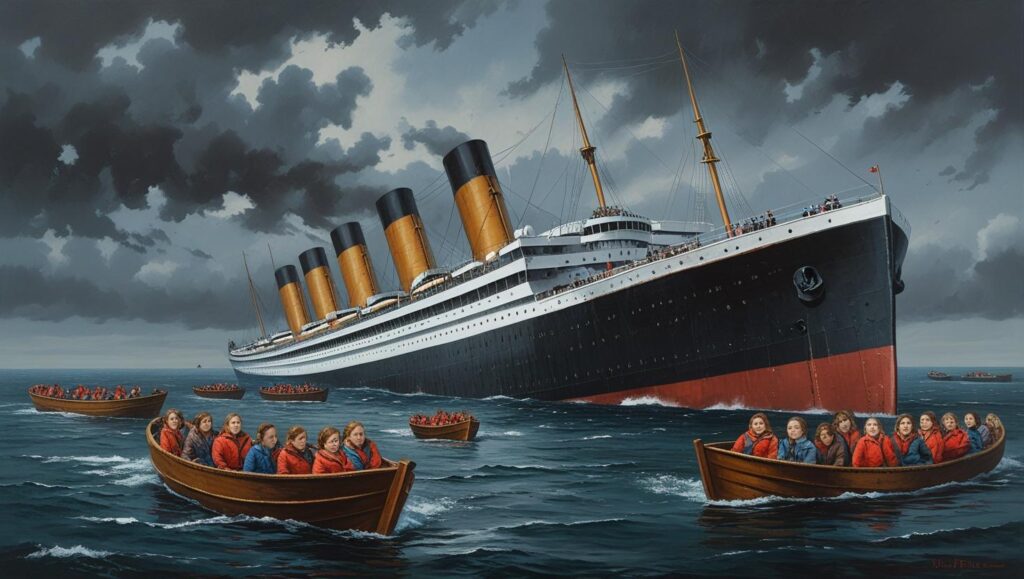The word “Titanic” does not just bring a memory, it summons a feeling.
You hear that haunting flute melody and Céline Dion‘s powerful voice. You picture Rose at the bow, her arms wide open and her hair caught in the wind. You see Jack behind her, whispering the words “I’m flying.”
Your memory might then take you to the iceberg, the chaos, the final kiss in the freezing water, and then the heartbreaking piano swell. You see Jack slipping beneath the surface. You hear Rose whisper “I’ll never let you go.” And then, Celine Dion’s “My Heart Will Go On” rises like a ghost from the Atlantic.
Yes! That feeling.
The real Titanic is different, it wasn’t just about love or sacrifice.
Titanic is not just a historical shipwreck, it is a cinematic love story that is burned into almost everyone’s imagination, a tragedy that is wrapped in violence and soft lighting. But beyond the music, romance, and the myth lies a harsher story, one that does not get retold in movie trailers.
The real Titanic is different, it wasn’t just about love or sacrifice. The story we think we know—the one about chivalry, sacrifice, and gentlemen calmly giving up their lives while women and children were saved—has been passed down like gospel. There is even a shocking statistic that backs it: 73% of women survived, only 19% of men did.
This sounds very noble, right? The height of chivalry!
But what if I told you that this statistic does not tell what really happened? What if I told you that the real Titanic was not just a tale of romance and bravery, but also a case of classism, total confusion, and chaotic decision-making? Would you still think the story with that statistic is noble if I told you that many of the people who died never even had a chance to reach the deck, let alone be offered a lifeboat?
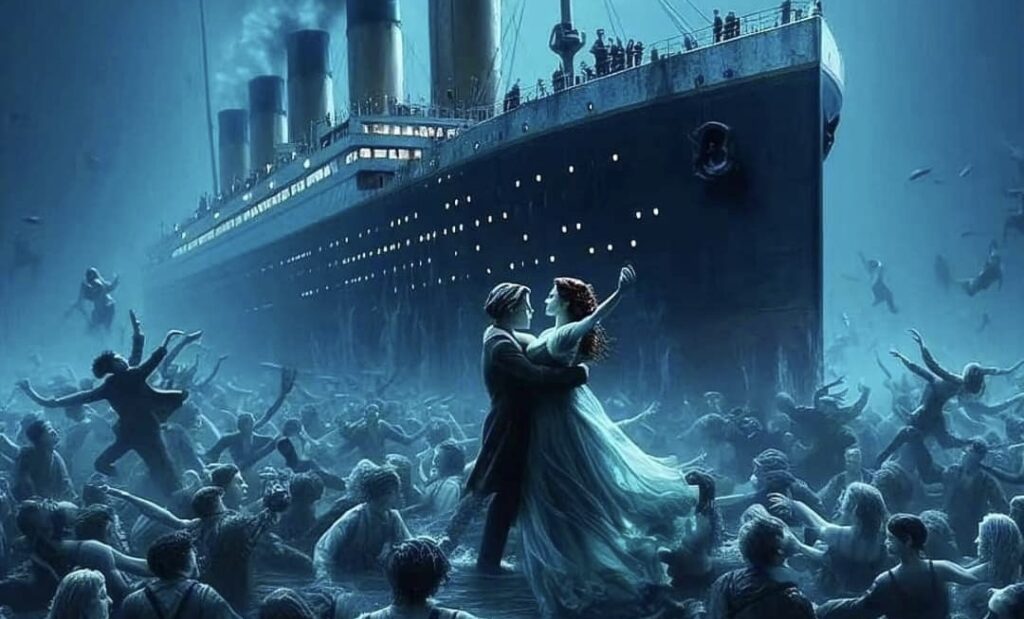
The truth is much more complicated than “women and children first.” It is a story about who had access, who gave the orders, and who was already doomed before the first lifeboat ever touched the water.
Let’s go back to before the movie, beyond the music, past the myths, and into the cold, terrifying dark, where the real Titanic truth lies, just below the surface.
A Gunshot in the Dark: What We Think Happened
Imagine this: It is just after midnight on the 15th of April, 1912. The night is so cold that you can barely move and the stars above are so bright, they look unreal. On the deck of the Titanic, a ship officer blows the whistle, raises his gun and the crowd panics as he fires a shot into the air.
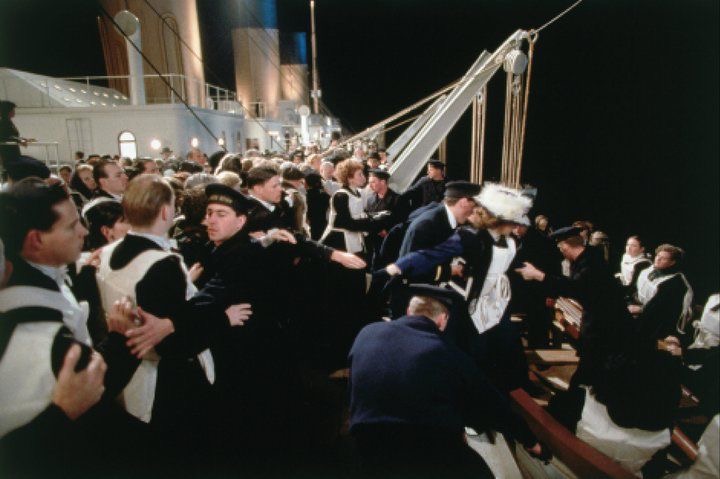
You’ve probably seen something like this in a movie, even if you have not read any history books. It is a famous scene in films like Titanic (1997) or A Night to Remember. It is often used to support the idea that women and children were calmly helped into lifeboats, while men were forced to stay behind; some of them held at gunpoint, others choosing to die bravely.
But here’s the truth: that scene is not the full story. In fact, the parts that people remember the most are usually the parts that are mostly wrong.
In January 2025, a viral tweet claimed that desperate men that were aboard the RMS Titanic had to be held back at gunpoint in order to let women and children be safely led into the lifeboats. The tweet said,
“Men were threatened with guns if they tried to board lifeboats. 73% of women survived. 19% of men did. Chivalry isn’t dead. It sank with the Titanic.”
Within hours, #WomenAndChildrenFirst trended, along with GIFs of First Officer William Murdoch firing a revolver. People online started arguing. “Was this true? Were men really kept back by force so women could be saved? Did this show that men were more honorable back then? Did chivalry or the barrel of a gun really dictate who got saved?”
But if you dig into the real facts, like the survivor lists, the deck maps, and the crew’s own words, a different story will appear. A story that is not so noble. To understand this, we need to look at where the whole “women and children first” idea came from.
Where the Idea of “Women and Children First” Came From
This phrase did not start with the Titanic. Once upon a time, in 1852, there was a British ship called the HMS Birkenhead that sank. The soldiers that were on board stood still and let the women and children get on the lifeboats first. It became a big story in the newspapers, and people started to believe that things should be handled that way whenever there is an emergency.
The news stuck with many people and by the time the Titanic set sail in 1912, the idea had become a kind of rule amongst rich British men who designed the ship and worked as officers. However, there was one tiny but relevant problem: no one explained how it was supposed to work. This is what led to a lot of confusion when the ship hit the iceberg.
Confusing Orders and Mixed Messages
According to the testimony of several crew members, survivors, and even the officers themselves, the order was real, but the way it was carried out was confusing and inconsistent.
Captain Edward J. Smith, the captain of the Titanic, the one in charge of the entire ship, said the words: “Women and children first.” But here is the problem, he only said it once, and he didn’t give any written instructions. Because of this, different officers understood the order in different ways.
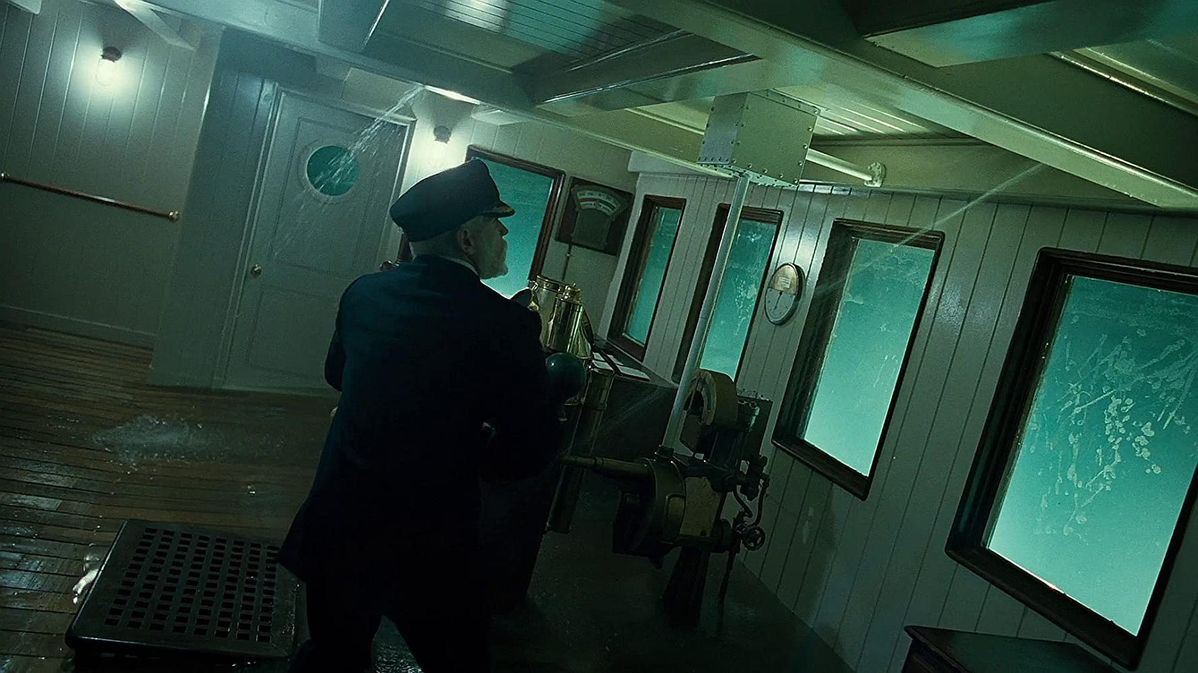
Charles Lightoller, the ship’s Second Officer, heard the command directly from Captain Smith. He later told investigators that he believed the captain meant only women and children should be allowed into the boats. So when there weren’t any women left nearby, he let the lifeboats leave half empty, even though they could hold over 60 people.
Women didn’t survive because they were women. They survived because they were in the right place on the ship.
William Murdoch, the First Officer, was in charge of the other side of the ship. He didn’t survive, so there wasn’t a personal recount. However, many passengers and crew said he followed the rule differently. He allowed women and children on the boat first, but if there was still room, he let some men board too. As a result, his boats were fuller.
This is one of the major reasons why the evacuation was so uneven. Some boats left half empty, others were filled. It all depended on which officer was in charge nearby and how they understood the captain’s vague order. The confusion wasn’t because people didn’t care. It happened because the plan was not clear and by the time people realized that, it was already too late.
It Was More About Class Than Gender
Let’s be honest, this part might be uncomfortable to hear.
If you were in first class on the Titanic, your chance of surviving would be about 60%. If you were in third-class (steerage), your chance would be about 24%. And if you were a third-class child, you were actually less likely to survive than a man in the first class.
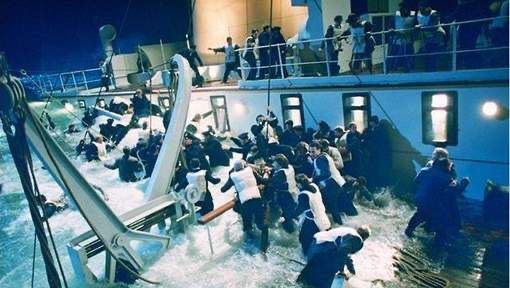
So the truth is, women didn’t survive because they were women, they survived because they were in the right place on the ship.
Most third-class passengers were immigrants from countries like Ireland, Italy, Syria, and Sweden. Many of them couldn’t speak English well. Some of them didn’t even know where to go, as the crew members didn’t explain clearly.
There were gates blocking the way upstairs, and by the time many of them reached the lifeboats, it was already too late. The “women and children first” idea did not even work because people were selfish. It failed because people who needed help the most didn’t even get the chance to be helped.
Yes, There Were Guns but Not Many Shots
It is true that some officers had guns. Fifth Officer Harold Lowe, who was in charge of lifeboat No. 14, fired warning shots in the air to control the crowd. In Officer Lowe’s words: “I had to fire my pistol to make the crowd stand back and give me a chance to load the boat properly.”
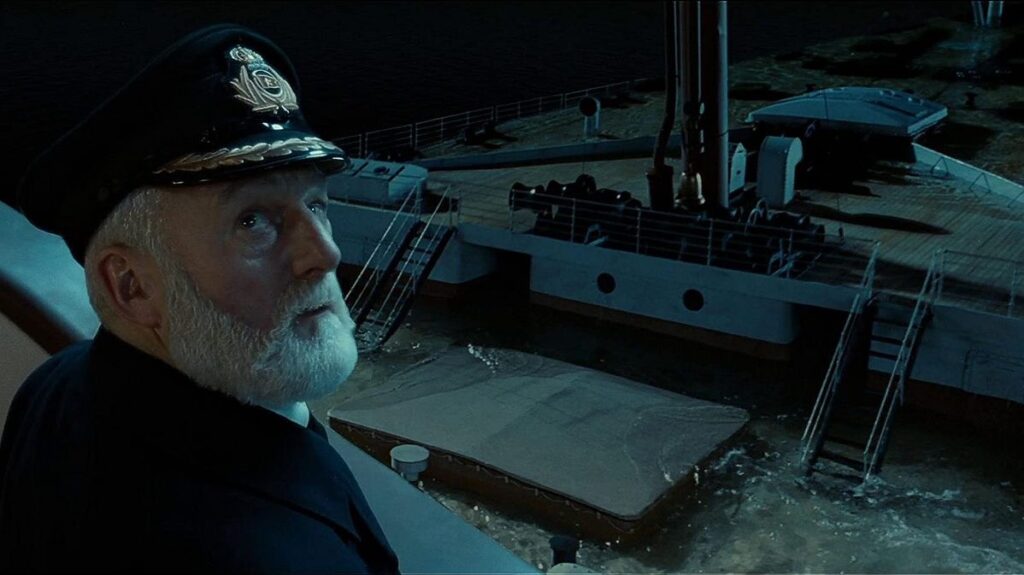
Another officer waved a pistol to stop people from rushing a boat. However, there is no proof that anyone was actually shot for trying to board a lifeboat. The guns were not about bravery; they were about keeping order. Officers were trying to stop people from panicking, not protect some noble idea of “men stay behind.”
It wasn’t a fair system where children and women were calmly saved and men bravely stepped aside.
This brings us to a little girl whose story proves that many young ones were left behind, not because of a lack of space, but because of bad planning.
The Story of Lillian
Five-year-old Lilian Asplund was in third class with her family. They stayed where they were waiting for someone to come help, but that help never came. In the end, Lillian survived but her parents and three brothers did not.
Stories like Lillian’s show us that this wasn’t a fair system where children and women were calmly saved, and men bravely stepped aside. It was a disaster full of delays, unfairness, and bad decisions, most of which could have been avoided.
Why People Still Believe the Myth
So why do we keep hearing the same old story about “women and children first”?
The answer is simple “because it makes us feel better.”
It gives the tragedy a sense of order, like there were rules even in the middle of chaos. After the sinking, newspapers praised the men who stayed behind. It made the disaster feel meaningful.
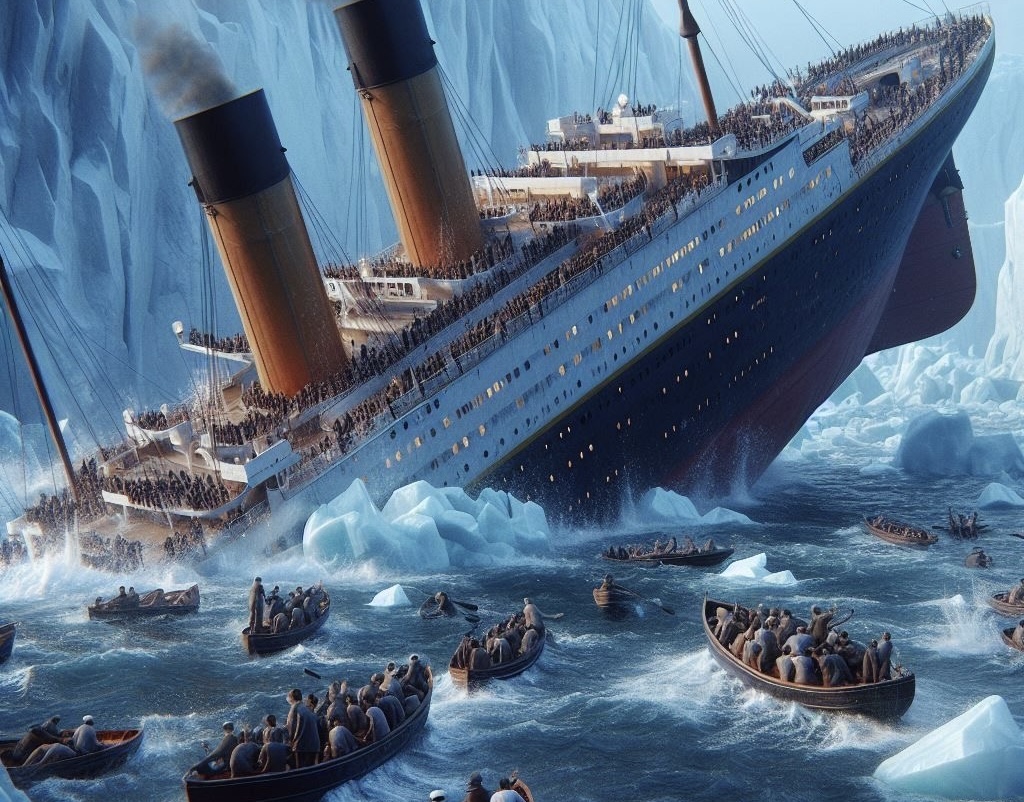
Later, it was used during the women’s rights movement to say that women needed protection, not equality. In today’s world, some people use it to say that men are “disposable” or unfairly treated.
However, none of those arguments tell the whole truth. They just use a myth to support whatever point they want to make.
The Myth Has a Heartbeat but the Truth has a Pulse
The real legacy of the Titanic is not about romance or sacrifice. It is about how myths are used to cover up mistakes. It is about the little girl who waited, the crew who stayed behind, and the families who never had a chance.
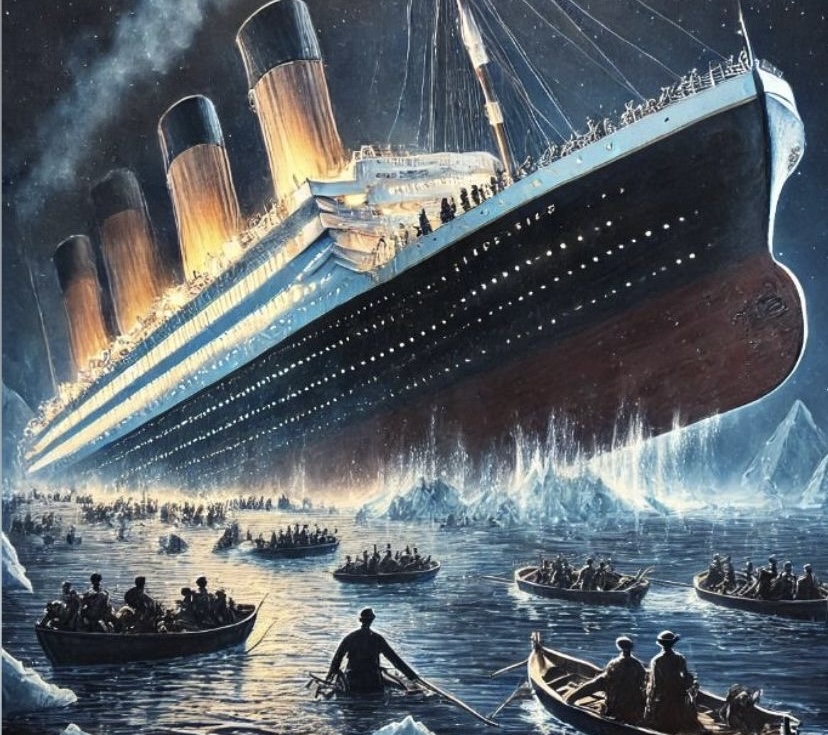
So the next time someone says, “73% of women survived, only 19% of men did and chivalry is dead,” ask them:
- If they know the number of people who had access to the boats?
- The people who didn’t.
- And what they know about the story, the missing part, the real truth.
We don’t need perfect heroes to learn from history. We just need the truth. While the myth, that is the popular story we know, is still very much alive; the truth, though not as famous as the myth, is more real.
Comment below — did this change how you see the Titanic?”


